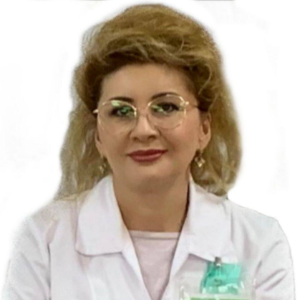Title : Reasons contributing to the formation of dystrophic diseases of the genitals in women
Abstract:
Dystrophic diseases of the vulva (DDV) include an extensive group of diseases of the female external genitalia, which are based on the processes of collagen disorganization. The high frequency of domestic stress (67.0%) could be dictated by the presence of DDV due to increased anxiety and suspiciousness, just as emotional stress itself could contribute to the formation of the disease. These conditions also contribute to low adherence to treatment and the formation of a "vicious circle" when the mutual influence of the peripheral process on the central nervous system is fixed and vice versa. The main parameters of monitoring were: control of condition (well-being); compliance with preventive measures; control of the dose and duration of medications used at home; intensification of therapy. The study design included a comprehensive clinical and laboratory examination of the patient in order to identify the main causes of the disease, provision of detailed information about the disease and possible consequences (information letters, booklets, information about new diagnostic and treatment methods) and subsequent interaction with the patients during a long period of clinical observation. To study the effectiveness of therapy, we used the following methods of interaction with patients: surveys using specially designed tests, SMS notifications, online counseling, and telephone calls. The results of microscopic examination of the genital tract discharge showed that among the examined patients, 54 (61.4%) had fungi of the genus Candida, 25 (28.4%) had signs of bacterial vaginosis (Gardnerella vaginalis). Ureaplasma Urealyticum was detected from 29 (32.9%) out of 88 examined persons. Other bacterial pathogens were also detected: in 13 (14.8%) cases, Staphylococcus epidermidis was isolated, in 39 (44.3%) - Enterobacter, in 7 (7.9%) - Streptococcus haemolyticus, in 2 (2.3%) - Streptococcus saprophyticus and in 3 (3.4%) - Staphylococcus aureus. When examining scrapings of urogenital tract (UGT) separated by PCR diagnostics for the presence of viruses, it was revealed that among 88 patients, in 11 (12.5%) cases, Herpes Simplex Virus type II (HSV-II) was detected, in 14 (15.9%) - Herpes Simplex Virus type I (HSV I), in (13.6%) - Cytomegalovirus (CMV), in 21 (23.8%) - Human Papillomavirus (HPV) 16/18, in 3 (3.4% ) - Human Papillomavirus 31/33 (HPV 31/33), in 2 (2.3%) cases - Chlamydia trachomatis, in 3 (3.4%) Mycoplasma Genitalium. In general, in 61.4% of patients with dystrophic diseases of the vulva, concomitant pathogenic and conditionally pathogenic microflora was detected in the lesions. The most common pathogens in dystrophic diseases of the genitals were Ureaplasma urealyticum (32.9%), HPV type 16/18 (23.8%) and Candida albicans (61.4%), Gardnerella vaginalis (28.4%), Staphylococcus epidermidis (44.3%), which may indicate both their starting and aggravating role in the origin of dystrophy. In any case, the identification of these pathogens requires the introduction of antibacterial, antiviral, antifungal drugs into complex therapy.
Conclusion: Thus, based on the use of modern methods of increasing adherence to therapy in patients with dystrophic diseases of the vulva, such as testing using specially designed questionnaires and monitoring the condition through online consultation, we were able to significantly improve the effectiveness of the therapy. After several courses of complex therapy, the need for online consultations decreased and it was enough to send SMS notifications about reminders of certain treatment and preventive measures.
Thus, the direct involvement of STIs in the development of genital neoplasms has not yet been proven, however, there are a number of works, including ours, indicating an increased incidence of some STIs in dystrophy and the initial stages of dysplasia of the vulva, vagina, and cervix. The mechanism of influence of STIs on the formation of vulvar dystrophy can be both direct and indirect.
Audience Take Away Notes:
The algorithm of treatment of genital warts recommended by us will significantly individualize the approach to treatment, reduce the number of complications and relapses of the disease. it can be useful for obstetrician-gynecologists, dermatovenereologists, oncologists



